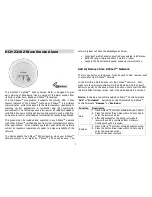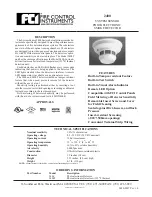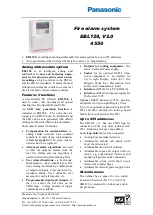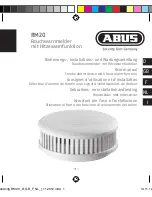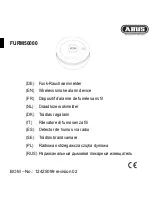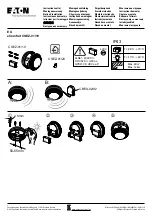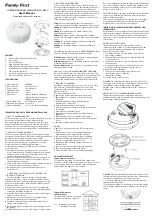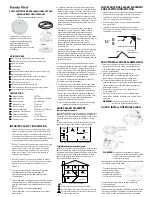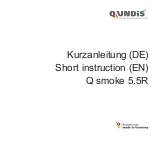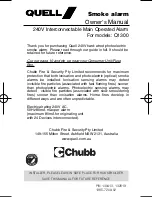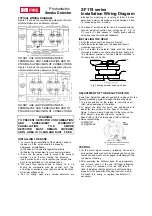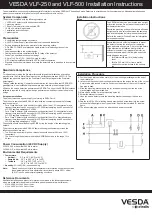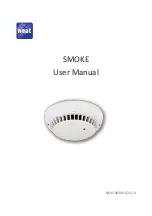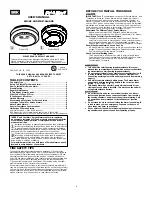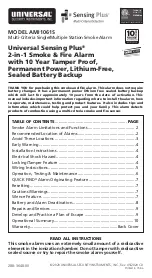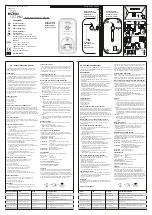
© 2020 Carrier
1 / 4
P/N 3102678-EN • REV 001 • ISS 02DEC20
KIR-OSHCD Intelligent Rotary
Multisensor Optical
Photoelectric Smoke Heat and
CO Detector Installation Sheet
Description
The KIR-OSHCD is an intelligent device that contains an advanced
optical smoke sensor, a rate of rise heat sensor with a fixed
temperature setting for detecting fire conditions, and a life safety
carbon monoxide sensor to detect carbon monoxide gas from sources
of combustion. The detector analyzes data from both the heat sensor
and the optical sensing chamber to recognize smoke from a fire while
ignoring nuisance non-fire sources and whether to initiate an alarm to
the Fire Alarm Control Panel. The detector analyzes the smoke and
heat sensors independently from the CO sensor to determine whether
to initiate a fire alarm, a life safety CO alarm, or both.
LED indicator.
The LED indicator (see Figure 1) displays the following
states:
•
Normal: Green LED indicator flashes, no action.
•
Alarm/active: Red LED indicator flashes, evacuate the area.
Sensor end-of-life indicator.
The detector signals a “COMMON
TRBL ACT” condition on the control panel when the CO sensor
reaches its end of life. Pressing the Details button on the control panel
displays “END OF LIFE ACT” providing verification that it is an end-of-
life trouble of the CO sensor. This trouble remains active until the
detector is replaced, even if the panel is reset.
Figure 1: KIR-OSHCD features
1. Self-locking
tab
2. LED
indicator
Installation
Notes
•
This detector does not sense fires in areas where smoke or heat
cannot reach the detector. Smoke or heat from fires in walls, roofs,
or on the opposite side of closed doors may not reach the detector.
•
The heat sensor in this device provides a source of supplemental
information. The heat sensor by itself does not provide life safety
protection.
•
To ensure proper operation, store the detector within the
recommended ranges. Allow the detector to stabilize to room
temperature before applying power.
•
The dust cover (supplied) must remain on the detector during
installation and be removed prior to commissioning and service.
The dust cover is not a substitute for removing the detector during
new construction or heavy remodeling.
•
Do not install detectors until after final construction cleanup (unless
otherwise specified by the AHJ).
•
Do not use smoke detectors with detector guards unless the
combination has been evaluated and found suitable.
•
Install per NFPA 72
National Fire Alarm and Signaling Code
,
NFPA 720
Standard for the Installation of Carbon Monoxide (CO)
Detection and Warning Equipment
, and UL 2075
Standard for Gas
and Vapor Detectors and Sensors
.
•
Upon completion of the original installation and following any
modifications or additions to the system, perform a calibrated
sensitivity test per NFPA code. The Kidde Intelligent Series
devices can perform this test and generate a system sensitivity
report.
To install the detector:
1. Install and wire the base as described on the installation sheet
supplied with the base.
2. Set the detector address. Refer to the panel technical reference
manual for a list of valid addresses. Use a screwdriver to adjust
the two rotary switches on the back of the detector.
(See Figure 1.) Set the left rotary switch (0 through 12) for the 10s
and 100s digit and the right rotary switch for the 0 through 9 digit.
3. Attach the detector to the base by rotating the detector clockwise
until it snaps into the locked position.
2
firealarmresources.com





